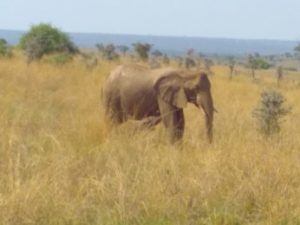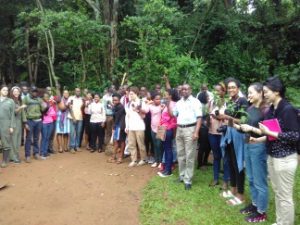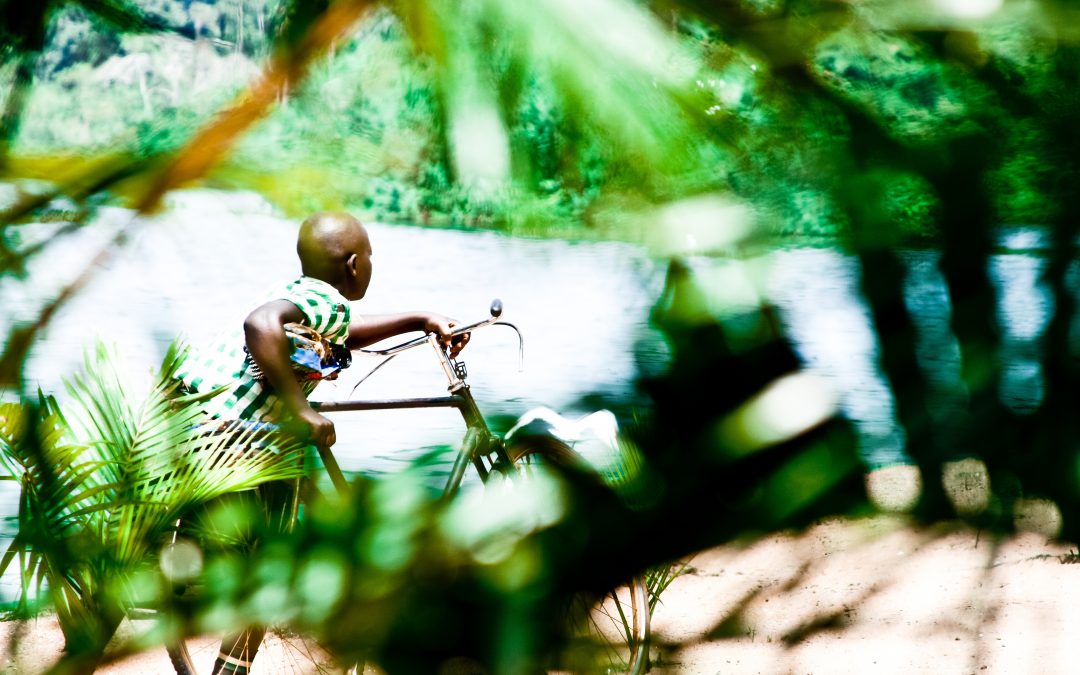Judith Krauss, Lecturer in Environment, Climate Change and Development, Global Development Institute, and Mario Hernández Trejo, PhD researcher and teaching assistant in Geography
A ten-day field course to Uganda is a staple of various Master’s pathways in International Development at the Global Development Institute. Five years from now, students will remember two things: their dissertation, and the time in Uganda. After all the hours spent in the University Library, in fierce tutorial debates, and lecture halls in rainy Manchester, the time in Uganda brings, as one student put it, everything to life. For us as teaching staff, it was a privilege to accompany our students on fieldwork and watch an incredibly steep learning curve every day.
It was the consensus on our pathway ‘Environment, Climate Change and Development’ that our programme, led by the great Yvonne from the equally great Venture Uganda, was the best among all pathways. It was a privilege spending time with the Uganda Wildlife Education Centre in Entebbe, Hoima District Farmers‘ Association, the Chimp Trust in Hoima and the schools and women’s group with whom they work as well as the Bulindi Chimpanzee & Community Project, Uganda Wildlife Authority in Murchison Falls National Park, Masindi and Kampala, the community organisation leading Kigaju Forest Camp, the Kituuka community, Wildlife Conservation Society, the Climate Change Unit in the Ministry of Water and the Environment, and the Climate Champions initiative including Jorumat Agro-investments and St. Jude Family Projects. This blog is a partial attempt to appreciate their time, expertise and openness, while also feeding back some of our learning to those who so generously shared their viewpoints with us.
 Pathway theme 1: Living with protected areas
Pathway theme 1: Living with protected areas
If you apply for a Ugandan visa, you quickly get an inkling of how important wildlife conservation is for tourist revenue: the Ugandan government’s website as well as airport billboards in the immigration area advertise the opportunities to interact with mountain gorillas and spend time in one of the country’s 12 wildlife reserves, confirming the significance of wildlife conservation.
Armed with this knowledge, we interacted with passionate individuals for whom conserving chimpanzees, giraffes, elephants and the many other charistmatic megafauna in Uganda was not a profession, but a vocation. Public-sector and civil-society organisations told us about a variety of ways not only to protect animals, but safeguard community livelihoods by reducing human-wildlife conflict potentials: these include trenches to stop elephants from crop-raiding around national parks, as well as promoting income-generating, forest-preserving activities which reduce the likelihood of chimpanzees going astray for food and shelter. And we were privileged to see the fruits of these conservation activities, be it on community-led forest walks spotting chimpanzees, to tours through Murchison Falls National Park which allowed us to see elephants, lions, hippos and alligators.
However, when speaking to farmers whose crops are routinely being raided by elephants or baboons without compensation or protection, what do you say? When the majority of tourists visiting national parks will not be made aware of communities‘ resulting struggles, what could we do – apart from promise that we would do everything we could to share what they had told us? And what will happen to both humans and animals once oil exploration, which has already begun in Murchison Falls National Park, shifts into the production phase and all the infrastructure and disruption that entails?
 As we met more actors concerned about wildlife protection in Uganda, and listened to their (often divergent) voices, we realised more and more that conservation is not only about the environment. The breathtaking landscapes that one can appreciate in a National Park are shaped by people and actions that can be located ouside its boundaries. From the expansion of the agricultural frontier, to the global oil demand, the lions in protected areas are part of a bigger picture that we frequently do not frame with our cameras.
As we met more actors concerned about wildlife protection in Uganda, and listened to their (often divergent) voices, we realised more and more that conservation is not only about the environment. The breathtaking landscapes that one can appreciate in a National Park are shaped by people and actions that can be located ouside its boundaries. From the expansion of the agricultural frontier, to the global oil demand, the lions in protected areas are part of a bigger picture that we frequently do not frame with our cameras.
Pathway theme 2: Climate change adaptation in agriculture
Every farmer and forest owner we spoke to told us that they were already seeing changes in rain patterns which were affecting their crops, harvests, yields through lack of precipitation and new pests. At a point in time when the world still meets once a year to speak in largely abstract terms about amorphous climate change at the conferences of the parties of the United Nations Framework Convention on Climate Change, the climate is already changing for Ugandan farmers.
Consequently, public-sector and civil-society initiatives are on-going to promote approaches to adapt to changing weather patterns. These different expressions of human labour range from planting seeds at greater depth via cultivation in mandala patterns to use water run-off, to water-harvesting and water pumps powered by treading or solar power. They equally encompass tree-planting in order to reduce soil erosion and promote cooler micro-climates, as well as intercropping different species to increase hectare productivity as well as capitalise on trees providing shade and biomass to benefit coffee agroforestry. In many cases, they encompass what agricultural officers would call good agrarian practices, which have increased in importance on account of lower water availability.
 As support from governmental institutions is limited, local-level initiatives are stepping in to share knowledge with and empower farmers. Often, adoption of climate-smart practices is promoted by farmers seeing a neighbour’s success in terms of yields, harvests and incomes. Our observations confirm that the majority of climate-change adaptation measures in agriculture will not be centrally planned by government departments, but rather emanate from autonomous adaptation by farmers drawing on local expertise and resources. Ultimately, it is farmers’ labour which carries the burden of both agricultural production for community livelihoods and adaptation. How can industrialised countries, who have caused the lion’s share of carbon emissions, live up to their responsibility to support those most affected by climate change who are dependent on the land on and off which they live?
As support from governmental institutions is limited, local-level initiatives are stepping in to share knowledge with and empower farmers. Often, adoption of climate-smart practices is promoted by farmers seeing a neighbour’s success in terms of yields, harvests and incomes. Our observations confirm that the majority of climate-change adaptation measures in agriculture will not be centrally planned by government departments, but rather emanate from autonomous adaptation by farmers drawing on local expertise and resources. Ultimately, it is farmers’ labour which carries the burden of both agricultural production for community livelihoods and adaptation. How can industrialised countries, who have caused the lion’s share of carbon emissions, live up to their responsibility to support those most affected by climate change who are dependent on the land on and off which they live?
The time in Uganda allowed us to gain insights on both our pathway themes, but also has left us with more questions. Most importantly, we have put down roots – quite literally, as we were invited to plant multiple trees. These trees, we learnt, now have our names on them, and we therefore will need to come back to check on their progress. We certainly hope to visit our wonderful hosts again!
Find out more about our Master’s programmes

